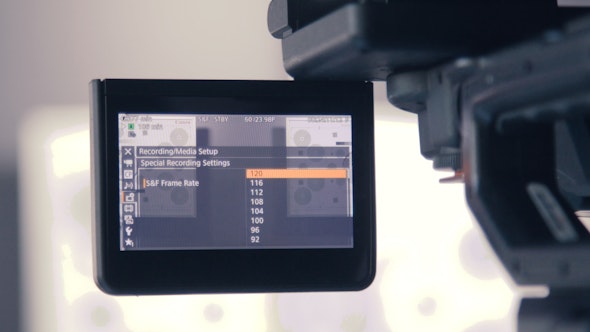How to Use Slow Motion on the C300 Mark II
The Canon C300 Mark II finally brings full-featured slow motion to the Cinema EOS line - a long-anticipated feature. But accessing the full range of possibilities is not as simple as changing the frame rate from the recording menu. So let’s quickly dive into how to access the different layers of slow motion on the C300 Mark II. As the EOS C300 Mark II maxes out at 30FPS in 4K, the remainder of the article will be discussing 2K and HD options.
Two terms to familiarize yourself with are Base Frame Rate and Shooting Frame Rate. This is because the EOS C300 Mark II has two fundamentally different ways of capturing high speed.
Maximizing the Base Frame Rate is Easiest
Under Recording/Media Setup, just hit the option for Frame Rate and choose from options up to 59.94p. This will fulfill a lot of people’s needs, and is very simple to setup when you are in a hurry. It will shoot 59.94P and playback at 59.94P, giving you that smooth realtime playback commonly used in sports. Consider it the entry-level option.
Slow and Fast Motion

The second option is shooting in a way that provides in-camera slow motion playback. This means you can shoot in 60p, but have the file played back at 24 or 30 fps. Canon calls this Slow and Fast Motion. The first thing you’d do is put the camera into one of the two different Slow and Fast Motion modes, either Slow and Fast Motion for up to 60p or Slow and Fast Motion Crop for 120p. Note when using this Recording Mode, no audio will be captured. Then, confirm your base frame rate, or playback rate, under Recording>Media Setup>Frame Rate. Once that is set up, use the S&F button on the side of the camera to dial in your shooting frame rate.
120fps Recording Requires Compromises
The Canon C300 Mark II is capable of shooting 120fps in full HD or 2K. But to deliver these high-speed shots, you must accept two major limitations: The camera only uses a 1920x1080 or 2048x1080 portion from the center of the sensor. This means your field of view will become twice as narrow, essentially doubling your effective focal length. You will also lose access to the amazing Dual Pixel Autofocus while you are in this cropped mode. If you accept these compromises, then you are ready to begin. Follow the Slow and Fast Motion directions above to get rolling.
In Conclusion
The Canon C300 Mark II is a highly capable cinema camera that will meet almost all of your slow-motion needs if you know how to work with it a little. It’s no Phantom Flex, but it packs quite a punch for its size and price.



